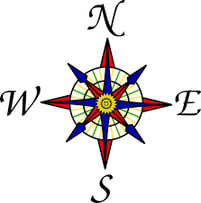 I remember as a new Boy Scout, we planned a hiking trip up into a primitive area in the mountains near my home. One of the first things we learned about reading a map was where to find the legend. The map legend contains important information needed to read a map, like indicating which direction is north. Now that we knew where to find the legend, we could orient the map so it made sense as we were planning our hike.
I remember as a new Boy Scout, we planned a hiking trip up into a primitive area in the mountains near my home. One of the first things we learned about reading a map was where to find the legend. The map legend contains important information needed to read a map, like indicating which direction is north. Now that we knew where to find the legend, we could orient the map so it made sense as we were planning our hike.
Most equipment in a typical semiconductor or electronics assembly factory has a user interface that contains a lot of information about the equipment. Most equipment also contains many screens that are used for controlling or operating the equipment. With the use of GEM, a factory host system can control the equipment and collect important data generated during processing.
Like a map, there is a lot of information available on the user interface of a piece of equipment. It can sometimes be difficult to know where to find the important information the host system needs to properly control and communicate with the equipment. The GEM standards provide guidelines on how critical items on the equipment user interface should be presented and controlled. For example, if the host sends information to the equipment operator about tasks they need to perform, the GEM terminal message guidelines state that the information must remain on the user interface of the equipment until the operator acknowledges that they have read it.
The SEMI E30 standard defines the Specification for the Generic Model for Communications and Control of Manufacturing Equipment (GEM). In addition to providing the definition of the common set of equipment behavior and communication capabilities required for manufacturing automation, the standard also provides requirements on which items must be present on an equipment user interface and how they should be represented. User interface requirements spelled out by the standard address communication state, terminal service new message indicator, terminal services message recognition button, communications state default and communications state selector.
This may seem like a small thing, but just like knowing where to find the legend on a map enabled understanding of the lines and symbols on the map, so too the GEM standards can help provide an understanding of information presented on an equipment interface that is essential for communication with a factory host system.
Click here to read the other articles in our SECS/GEM Features and Benefits series.
To download a white paper on an introduction to SECS/GEM, Click below:





